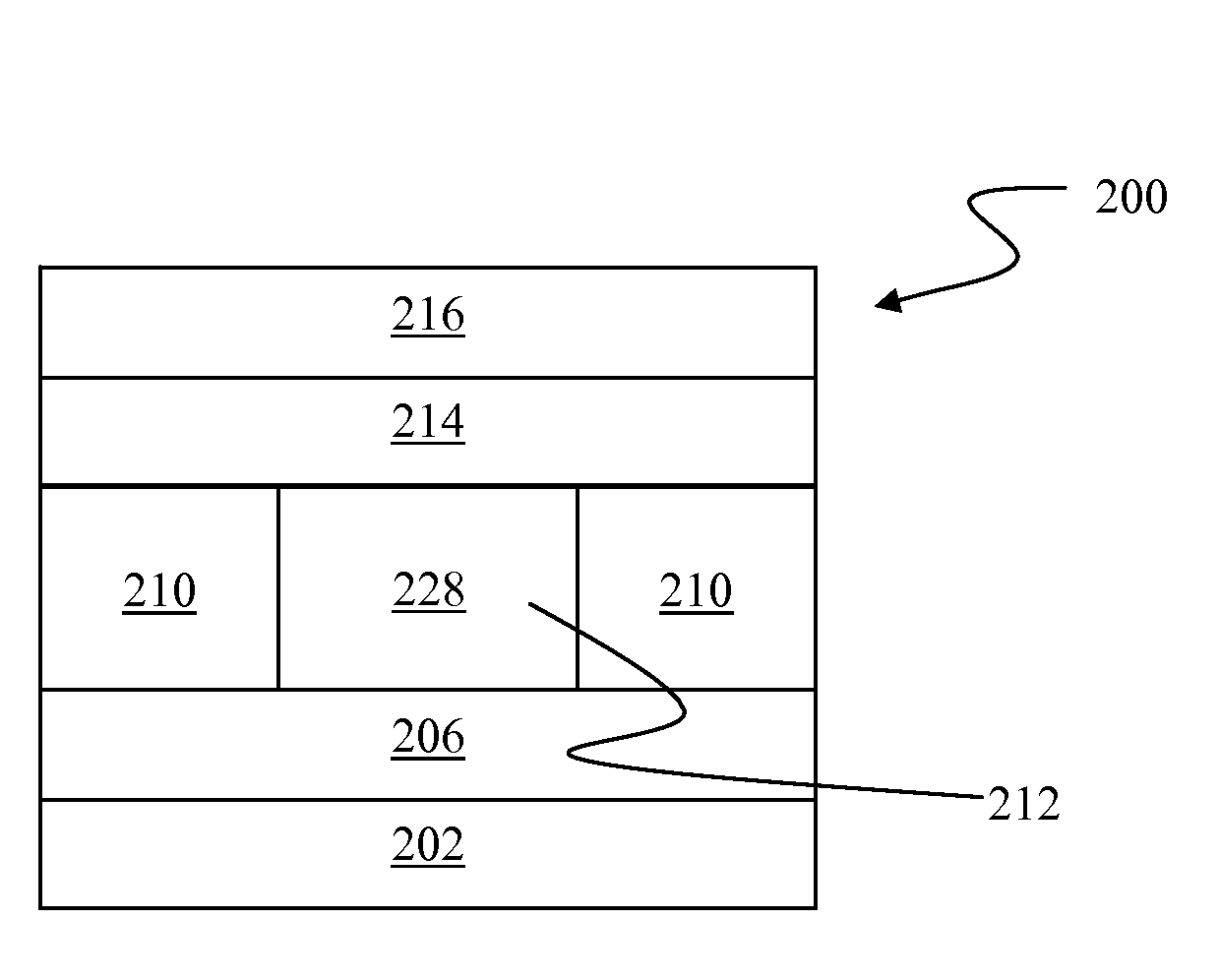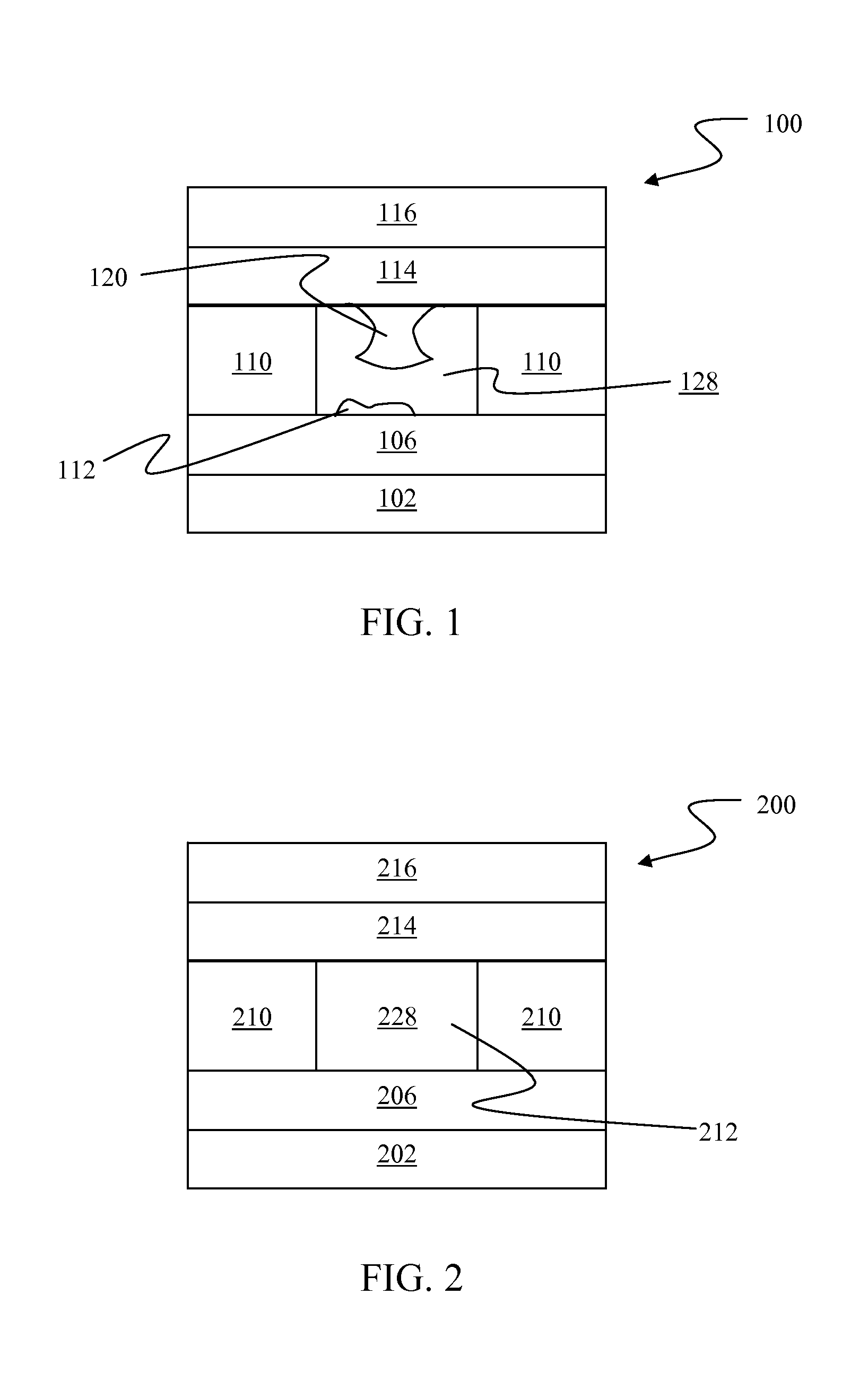Methods for forming electrodes in phase change memory devices
a phase change memory and electrode technology, applied in the field of forming electrodes in phase change memory devices, can solve the problems of reducing the contact area of one or more electrodes, limiting the goal of device miniaturization, and reducing the processing efficiency of devices, so as to reduce the structural irregularities of electrode materials, reduce the volume fraction of voids, and increase the uniformity and density of filling. effect of the density
- Summary
- Abstract
- Description
- Claims
- Application Information
AI Technical Summary
Benefits of technology
Problems solved by technology
Method used
Image
Examples
Embodiment Construction
[0037]The making and using of the presently preferred embodiments are discussed in detail below. It should be appreciated, however, that the present invention provides many applicable inventive concepts that can be embodied in a wide variety of specific contexts. The specific embodiments discussed are merely illustrative of specific ways to make and use the invention, and do not limit the scope of the invention.
[0038]The instant invention relates generally to electronic devices that include two or more electrodes in contact or electrical communication with an active material. As used herein, active material refers generally to an electrically stimulable material such as a programmable resistance material used for memory, programmable logic, or other applications; other memory material; or electrical switching material. A programmable resistance material is a material having two or more states that are distinguishable on the basis of electrical resistance. The two or more states may ...
PUM
| Property | Measurement | Unit |
|---|---|---|
| aspect ratio | aaaaa | aaaaa |
| aspect ratio | aaaaa | aaaaa |
| feature size | aaaaa | aaaaa |
Abstract
Description
Claims
Application Information
 Login to View More
Login to View More - R&D
- Intellectual Property
- Life Sciences
- Materials
- Tech Scout
- Unparalleled Data Quality
- Higher Quality Content
- 60% Fewer Hallucinations
Browse by: Latest US Patents, China's latest patents, Technical Efficacy Thesaurus, Application Domain, Technology Topic, Popular Technical Reports.
© 2025 PatSnap. All rights reserved.Legal|Privacy policy|Modern Slavery Act Transparency Statement|Sitemap|About US| Contact US: help@patsnap.com



